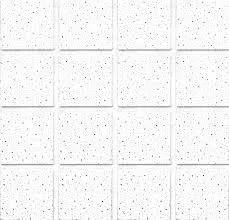- Afrikaans
- Albanian
- Amharic
- Arabic
- Armenian
- Azerbaijani
- Basque
- Belarusian
- Bengali
- Bosnian
- Bulgarian
- Catalan
- Cebuano
- Corsican
- Croatian
- Czech
- Danish
- Dutch
- English
- Esperanto
- Estonian
- French
- German
- Greek
- Hindi
- Indonesian
- irish
- Italian
- Japanese
- Korean
- Lao
- Malay
- Myanmar
- Norwegian
- Norwegian
- Polish
- Portuguese
- Romanian
- Russian
- Serbian
- Spanish
- Swedish
- Thai
- Turkish
- Ukrainian
- Uzbek
- Vietnamese
дек. . 03, 2024 16:42 Back to list
rated ceiling access panels
Understanding Rated Ceiling Access Panels Importance and Applications
In today’s construction and architectural design landscape, the importance of rated ceiling access panels is increasingly recognized. These panels serve a crucial role in maintaining safety standards while providing easy access to the spaces above the ceiling. In this article, we will explore the significance, features, and applications of rated ceiling access panels, emphasizing their role in both residential and commercial settings.
What are Rated Ceiling Access Panels?
Rated ceiling access panels are specially designed openings secured in ceilings that provide access to mechanical systems, electrical wiring, and plumbing components located overhead. These panels differ from standard access doors in that they are manufactured to meet specific fire rating specifications, ensuring they provide a level of protection against fire and smoke for a designated period. Rated access panels are typically constructed from materials such as steel, gypsum, or a combination of both, ensuring they meet the required fire-resistance ratings.
Importance of Fire Ratings
The fire rating of access panels is essential for several reasons. Firstly, buildings are required to adhere to various building codes and fire safety regulations that mandate the installation of rated access points in certain areas. This compliance helps minimize fire spread and enhances the overall safety of the structure. For instance, a one-hour rated access panel can maintain the integrity of a fire-rated ceiling for a certain duration, allowing occupants more time to evacuate in the event of a fire.
Moreover, fire-rated access panels help protect critical building systems. The HVAC, electrical, and plumbing systems often pass through ceilings, and these panels allow for necessary inspections and maintenance without compromising the fire-resistance rating of the ceiling.
Features of Rated Ceiling Access Panels
When choosing rated ceiling access panels, several features should be considered to ensure optimal performance
1. Fire Rating The degree of fire resistance (for example, 1-hour or 2-hour ratings) is a primary consideration. This rating indicates how long the panel can withstand fire and maintain its structural integrity.
2. Material The material composition affects both fire rating and durability. Steel panels are robust and often preferred for high-traffic areas, while gypsum panels offer good fire resistance and are lighter in weight.
rated ceiling access panels

3. Size Options Rated access panels are available in various sizes to accommodate different openings and needs. Custom sizes may also be available, ensuring a perfect fit for specific installations.
4. Ease of Access Many panels are designed for quick access. Features like spring-loaded latches or drop-down doors facilitate easy opening without specialized tools.
5. Finishing Options Aesthetic considerations can also be taken into account. Panels can be finished with paint or other materials to match the surrounding ceiling, making them less intrusive.
Applications of Rated Ceiling Access Panels
Rated ceiling access panels find applications in numerous sectors, including
- Commercial Buildings Offices and commercial spaces often use rated access panels to provide access to lighting, HVAC systems, and other utilities, meeting safety and compliance standards.
- Industrial Facilities Factories and manufacturing plants require robust access panels for maintenance and inspections of critical equipment located above ceilings.
- Healthcare Facilities Hospitals and clinics are subject to strict fire safety regulations, making rated access panels vital for accessing medical equipment and utilities while ensuring patient safety.
- Educational Institutions Schools and universities utilize these panels in classrooms and laboratories, ensuring compliance with safety regulations while allowing easy access for maintenance tasks.
Conclusion
Rated ceiling access panels are indispensable components in modern building design and construction, providing essential access while ensuring compliance with fire safety standards. Understanding their importance, features, and appropriate applications can help architects, builders, and property managers make informed decisions. By prioritizing safety and accessibility through the use of rated ceiling access panels, we contribute to creating safer environments for all occupants.
-
Transform Interiors with PVC Gypsum Ceiling: A Stylish, Durable, and Moisture-Resistant SolutionNewsMay.19,2025
-
The Smart Interior Upgrade: Discover the Durability and Versatility of Gypsum Ceiling Access Panel SolutionsNewsMay.19,2025
-
The Smart Choice for Interior Design: Discover the Value of PVC Gypsum Ceiling SolutionsNewsMay.19,2025
-
Mineral Fiber Ceiling Tiles: The Smart Blend of Performance and AestheticsNewsMay.19,2025
-
Mineral Fiber Ceiling Tiles: The Superior Choice Over Gypsum for Sound and Fire SafetyNewsMay.19,2025
-
Mineral Fiber Ceiling Tiles: Eco-Friendly Strength and Style for Every CeilingNewsMay.19,2025







